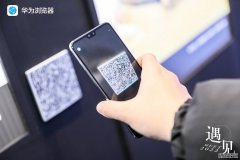千古商城 长命富贵金玉满堂花钱
花钱曾流行于我国古代社会,从秦汉开始,到近代社会都有铸造。其中在明清时期,花钱进入了一个铸造繁荣期,无论内容、数量,还是铸造水平都达到了一个新的高度。无论什么时代的花钱,它都能聪明和一个侧面反映当时那个时代的民俗和人们的精神追求。所以说对花钱的收藏和研究,也是探索我们祖先精神世界的一个途径。吉语钱从名称上就可以看出,是铸造吉祥语的花钱,钱文基本都是些祝福、铭志的文字或有特定寓意的图案。民间因为有用祈福、铭志的语言来兆吉的习惯,所以此类钱币又称“口彩钱”,它是花钱中最重要的一个门类。常见的面文有“龟鹤齐寿”、“金玉满堂”、“长命富贵”、“福如东海”、“平安吉庆”等。这都表达了古人对幸福生活的向往和追求。早期吉语钱铭文内容相对单调。主要以“祈福、增寿”为主。
Spending money was popular in ancient China, from Qin and Han Dynasties to modern society. During the Ming and Qing Dynasties, the money spent entered a prosperous period of foundry, which reached a new height in content, quantity and foundry level. No matter what era of spending, it can be smart and reflect the folk customs and people's spiritual pursuit at that time. So the collection and research of money is also a way to explore the spiritual world of our ancestors. From the name of auspicious money, we can see that it's the money for casting auspicious words. The money words are basically words with blessings and inscriptions or patterns with specific meanings. Because of the folk custom of praying for blessings and inscriptions, such coins are also called "mouth color money", which is the most important category of money. Common inscriptions include "turtle and crane live together", "gold and jade are everywhere", "longevity and wealth", "happiness is like the East China Sea", "peace and auspiciousness". All these express the ancient people's yearning and pursuit for a happy life. The content of the early Ji Qian inscriptions is relatively monotonous. Mainly "praying for blessings and increasing longevity".


我国古代钱币,品种繁多,除大量的流通币外,还有一种非流通币,俗称“花钱”。花钱主要用来玩赏、装饰、祈福和馈赠等,它以其讲究的用料、高超的工艺、精湛的艺术性以及独特的文物价值和文化价值而成为中国古代钱币的一个类别。花钱有官铸,也有私铸。大者如盆盘,小者似鸡目,有金、银、铜、铁、锡、铝以及其它各种质料,精粗不一,形状多样。有的有图案有文字,有的只有图案没有文字,也有的只有文字而无花纹。
There are many kinds of money in ancient China. In addition to a large number of circulating money, there is also a kind of non circulating money, commonly known as "spending money". Spending money is mainly used to enjoy, decorate, pray for blessings and present, etc. it has become a category of ancient Chinese coins with its exquisite materials, superb technology, exquisite artistry, unique cultural value and cultural value. There are official and private casts for spending money. The big one is like a basin plate, the small one is like a chicken. There are gold, silver, copper, iron, tin, aluminum and other materials. They are different in fineness and coarseness, and have various shapes. Some have patterns and characters, some only have patterns and no characters, and some only have characters but no patterns.
花钱源于汉代,在早期使用的时候主要是中国民间自娱自乐的一种玩钱。到近代社会都有铸造,其中在明清两代,花钱进入了一个铸造繁荣期,皇宫内也开始铸造花钱,而民间花钱也开始用上等的黄铜做材质。其无论是内容、数量,还是铸造水平都达到了一个新的高度。而且无论什么时代的花钱,它都能从一个侧面反映出当时那个时代的民俗和人们的精神追求。
The money came from the Han Dynasty. In the early days of its use, it was mainly a kind of play money for Chinese folk self entertainment. In modern society, there was casting. In Ming and Qing Dynasties, money was spent in a prosperous period of casting. The Imperial Palace began to cast money, and the people began to use superior brass as materials. Its content, quantity and casting level have reached a new height. And no matter what era of spending, it can reflect the folk customs and people's spiritual pursuit of that era from one side.
- 新闻
- 房产
- 汽车
- 娱乐
- 体育






















